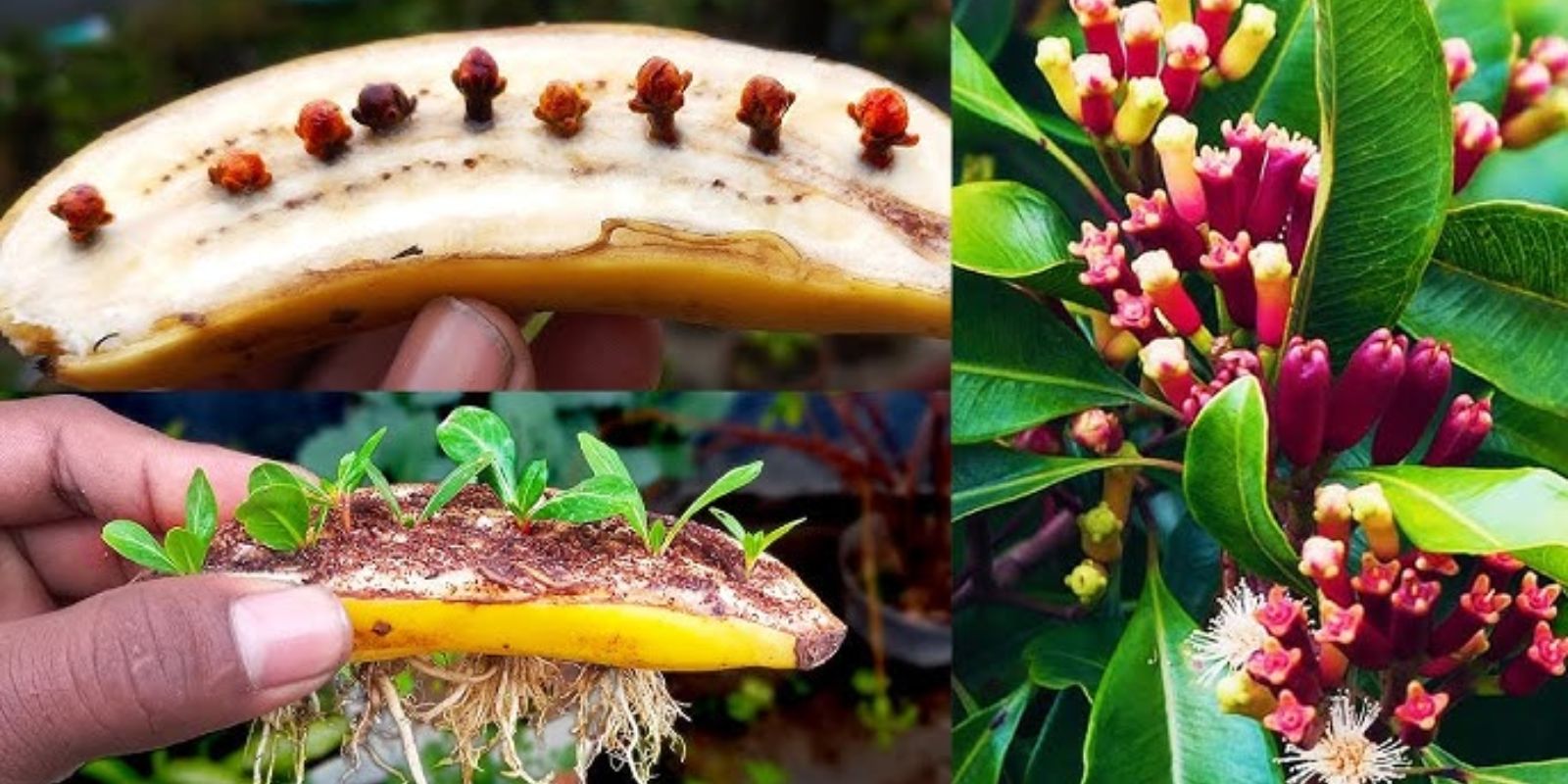Clove, scientifically known as Syzygium aromaticum, is one of the most prized spices in the world. Known for its aromatic flavor and medicinal properties, clove is a versatile addition to your spice rack. Did you know you can grow this exotic plant right in your home garden or indoors? This guide will walk you through everything you need to know to grow a healthy clove plant and enjoy the satisfaction of harvesting your own spice.
Why Grow Cloves at Home?
Growing clove plants at home is not only an engaging gardening project but also offers many benefits:
- Fresh Supply: Homegrown cloves are fresher and more flavorful than store-bought ones.
- Aesthetic Appeal: Clove trees have glossy green leaves and fragrant flowers, making them a beautiful addition to any garden or indoor space.
- Health Benefits: Cloves are known for their antimicrobial, anti-inflammatory, and antioxidant properties.
Understanding the Clove Plant
Clove trees are native to tropical regions and thrive in warm, humid climates. They are evergreen, slow-growing trees that can reach up to 25 feet tall in their natural habitat. However, with proper care, you can grow and maintain a smaller clove tree at home.
Step-by-Step Guide to Growing Clove Plants
1. Sourcing Clove Seeds or Saplings
- Purchase fresh clove seeds or young saplings from a reputable nursery.
- If using seeds, ensure they are fresh, as older seeds lose their viability.
2. Choosing the Right Location
- Clove plants need a warm, humid environment to thrive.
- Place the plant in a location with bright, indirect sunlight. For indoor gardening, a sunny windowsill or a room with consistent warmth is ideal.
- Maintain a temperature range of 70-90°F (21-32°C).
3. Preparing the Soil
- Use well-draining, loamy soil rich in organic matter.
- Clove plants prefer slightly acidic soil with a pH level between 6.0 and 7.0.
- Mix compost or organic fertilizer into the soil to provide essential nutrients.
4. Planting the Seeds or Sapling
- If planting seeds:
- Soak the seeds in water overnight to improve germination.
- Plant the seeds about 1 inch deep in the prepared soil.
- Water the soil lightly and cover the pot with plastic wrap to retain moisture.
- If planting a sapling:
- Dig a hole large enough to accommodate the roots.
- Gently place the sapling into the hole and cover the roots with soil.
5. Watering and Humidity
- Keep the soil consistently moist but not waterlogged. Overwatering can lead to root rot.
- Mist the leaves regularly to maintain humidity, especially in dry indoor environments.
6. Providing Support
- As the clove plant grows, it may require support to remain upright. Use stakes or a trellis to provide stability.
7. Fertilization
- Feed the plant with a balanced fertilizer every 4-6 weeks during the growing season.
- Avoid over-fertilizing, as it can harm the roots. Organic options like compost tea or diluted fish emulsion work well.
8. Pest and Disease Management
- Clove plants are generally hardy but may occasionally attract pests like aphids or scale insects.
- Inspect the plant regularly and treat infestations with neem oil or insecticidal soap.
9. Pruning and Maintenance
- Prune the plant regularly to remove dead or diseased branches. This encourages healthy growth and airflow around the plant.
- Mulch around the base of the plant to retain moisture and suppress weeds.
10. Harvesting Cloves
- Clove trees start producing flower buds after 3-4 years.
- Monitor the buds closely. Harvest them just before they open fully, while they are still pink and aromatic.
- Dry the harvested buds in a warm, shaded area for a week before storing them in an airtight container.
Common Challenges in Growing Clove Plants
- Temperature Fluctuations: Clove plants are sensitive to cold. Bring them indoors if temperatures drop below 60°F (15°C).
- Slow Growth: Clove plants are naturally slow growers. Be patient and consistent with care.
- Pests and Diseases: Regular monitoring and organic treatments can keep issues at bay.
Tips for Thriving Clove Plants
- Use rainwater or distilled water to avoid chemical build-up in the soil.
- Add a layer of mulch to retain soil moisture during hot weather.
- Rotate the plant periodically to ensure even sunlight exposure.
The Joy of Growing Clove Plants at Home
Growing a clove plant at home is a rewarding journey that combines patience, care, and a love for gardening. Not only will you enjoy the satisfaction of cultivating this exotic spice, but you’ll also add a touch of tropical beauty to your garden or indoor space.
Engage with Your Gardening Community
Share your clove-growing progress with fellow gardening enthusiasts! Snap pictures of your plant’s growth and harvested cloves, and share your tips on social media.
🌿 Join the conversation! #GrowClovesAtHome #HomeGardenTips #SpiceUpYourGarden #ClovePlantCare #TropicalGardening #HerbGardenGoals #GreenThumbGardener
By following these simple steps and staying committed to your plant’s care, you’ll be rewarded with a thriving clove plant and the satisfaction of adding homegrown spice to your kitchen. Happy gardening! 🌱

